Related Research Articles
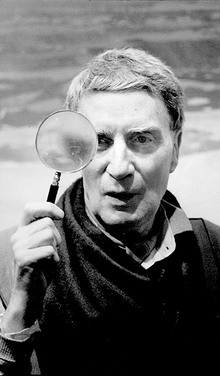
Brion Gysin was a British-Canadian painter, writer, sound poet, performance artist and inventor of experimental devices.

The cut-up technique is an aleatory narrative technique in which a written text is cut up and rearranged to create a new text. The concept can be traced to the Dadaists of the 1920s, but it was developed and popularized in the 1950s and early 1960s, especially by writer William Burroughs. It has since been used in a wide variety of contexts.

William Seward Burroughs II was an American writer and visual artist. He is widely considered a primary figure of the Beat Generation and a major postmodern author who influenced popular culture and literature. Burroughs wrote 18 novels and novellas, six collections of short stories, and four collections of essays. Five books of his interviews and correspondences have also been published. He was initially briefly known by the pen name William Lee. He also collaborated on projects and recordings with numerous performers and musicians, made many appearances in films, and created and exhibited thousands of visual artworks, including his celebrated "shotgun art".
Chaos magic, also spelled chaos magick, is a modern tradition of magic. Emerging in England in the 1970s as part of the wider neo-pagan and esoteric subculture, it drew heavily from the occult beliefs of artist Austin Osman Spare, expressed several decades earlier. It has been characterised as an invented religion, with some commentators drawing similarities between the movement and Discordianism. Magical organizations within this tradition include the Illuminates of Thanateros and Thee Temple ov Psychick Youth.
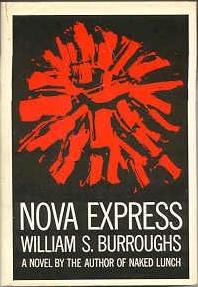
Nova Express is a 1964 novel by American author William S. Burroughs. It was written using the 'fold-in' method, a version of the cut-up method, developed by Burroughs with Brion Gysin, of enfolding snippets of different texts into the novel. It is part of The Nova Trilogy, or "Cut-Up Trilogy', together with The Soft Machine and The Ticket That Exploded. Burroughs considered the trilogy a "sequel" or "mathematical" continuation of Naked Lunch.
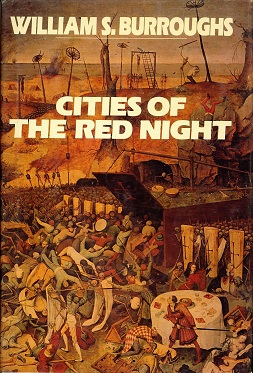
Cities of the Red Night is a 1981 novel by American author William S. Burroughs. His first full-length novel since The Wild Boys (1971), it is part of his final trilogy of novels, known as The Red Night Trilogy, followed by The Place of Dead Roads (1983) and The Western Lands (1987). The plot involves a group of radical pirates who seek the freedom to live under the articles set out by Captain James Misson. In near present day, a parallel story follows a detective searching for a lost boy, abducted for use in a sexual ritual. The cities of the title mimic and parody real places, and Burroughs makes references to the United States, Mexico, and Morocco.

The Beat Hotel was a small, run-down hotel of 42 rooms at 9 Rue Gît-le-Cœur in the Latin Quarter of Paris, notable chiefly as a residence for members of the Beat poetry movement of the mid-20th century.

John Giorno was an American poet and performance artist. He founded the not-for-profit production company Giorno Poetry Systems and organized a number of early multimedia poetry experiments and events. Giorno's creative journey was marked by collaborations, groundbreaking initiatives, and a deep exploration of diverse art forms. He gained prominence through his association with pop art luminary Andy Warhol, sparking a creative partnership that propelled his career to new heights.
Ted Berrigan was an American poet.
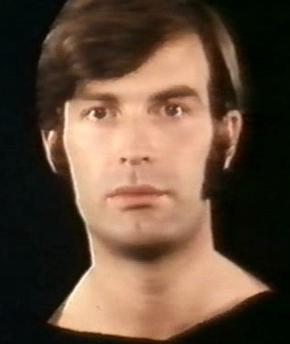
Antony Balch was an English film director and distributor, best known for his screen collaborations with Beat Generation author William S. Burroughs in the 1960s and for the 1970s horror film, Horror Hospital.

Ira Cohen was an American poet, publisher, photographer and filmmaker.
Founded by poet and performance artist John Giorno in 1965, Giorno Poetry Systems is a non-profit organization where artists, poets, and musicians present the work of other artists, poets, and musicians.

The Dreamachine, invented in 1959 by Brion Gysin and Ian Sommerville, is a stroboscopic flickering light art device that produces eidetic visual stimuli.
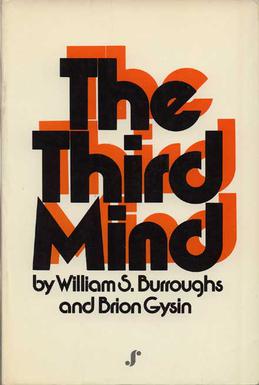
The Third Mind is a book by Beat Generation novelist William S. Burroughs and artist/poet/novelist Brion Gysin. First published in a French-language edition in 1977, it was published in English in 1978. It contains numerous short fiction pieces as well as poetry by Gysin, and an interview with Burroughs. Some chapters had previously been published, in slightly different form, in various literary journals between 1960 and 1973.
Auerhahn Press was a publishing company in San Francisco between 1959 and 1965, founded by printer-poet Dave Haselwood. The company published many key poets of the San Francisco Renaissance.
This is a bibliography of the works of William S. Burroughs.
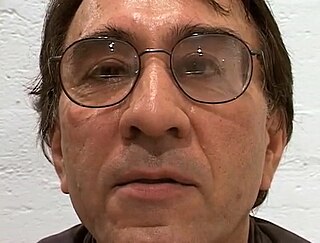
Nick Piombino is an American poet, essayist, artist and psychotherapist. He has been associated with poets from both the New York School of the 1960s and the Language Poets of the 1970s, though his work is not easily classified.

Ian Sommerville was an electronics technician and computer programmer. He is primarily known through his association with William S. Burroughs's circle of Beat Generation figures, and lived at Paris's so-called "Beat Hotel" by 1960, when they were regulars there, becoming Burroughs's lover and "systems adviser".

Call Me Burroughs is a spoken word album by Beat Generation author William S. Burroughs, which was released on LP by The English Bookshop, Paris, in June 1965, and then issued in the United States by ESP-Disk, New York, in 1966. Rhino Word Beat reissued the album on Compact Disc in 1995, the company's first ever reissue.
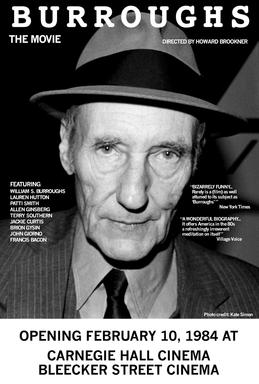
Burroughs is a 1983 documentary film directed by Howard Brookner about the Beat Generation writer William S. Burroughs.
References
- 1 2 Burroughs, William (1965). Time (PDF). 4 drawings by Brion Gysin. NYC: "C" Press. OCLC 71213 – via Reality Studio.
- ↑ Morgan, Ted (1988). Literary Outlaw: the Life and Times of William S. Burroughs . New York: Henry Holt and Company. pp. 321 ff. ISBN 0805009019. OCLC 17776286 . Retrieved 7 December 2024– via Open Library.
- ↑ Birmingham, Jed. "Time: Reports from the Bibliographic Bunke". RealityStudio. Retrieved 13 January 2025.
- ↑ "Ted Berrigan". Poetry Foundation . Retrieved 12 September 2021.
- ↑ Burroughs, William S. (November 4, 2013) [First published 1985]. The Adding Machine: Selected Essays. New York: Grove Atlantic. p. 60. ISBN 978-0802192974. OCLC 13762205 . Retrieved 8 December 2024– via Google Books.
- ↑ Jawaharlal Nehru | Nov. 30, 1962 at the Wayback Machine (archived 28 February 2024)
- ↑ "Books: King of the YADS". Time . Vol. LXXX, no. 22. November 30, 1962. Retrieved 13 January 2025.
- ↑ Morgan, Ted (1988). Literary Outlaw: the Life and Times of William S. Burroughs . New York: Henry Holt and Company. pp. 349 f. ISBN 0805009019. OCLC 17776286 . Retrieved 7 December 2024– via Open Library.
- 1 2 Sobieszek, Robert A. (1996). Ports of Entry: William S. Burroughs and the Arts. Illustrations and afterword by William S. Burroughs. Los Angeles: Los Angeles County Museum of Art. pp. 36–37. ISBN 0500974357. OCLC 35040735.
- ↑ "Time, by William Burroughs. With 4 drawings by Brion Gysin". HathiTrust Digital Library . HathiTrust . Retrieved 8 December 2024.
- ↑ Burroughs, William (1965). Time (PDF). 4 drawings by Brion Gysin. NYC: "C" Press. OCLC 71213 – via Monoskop.